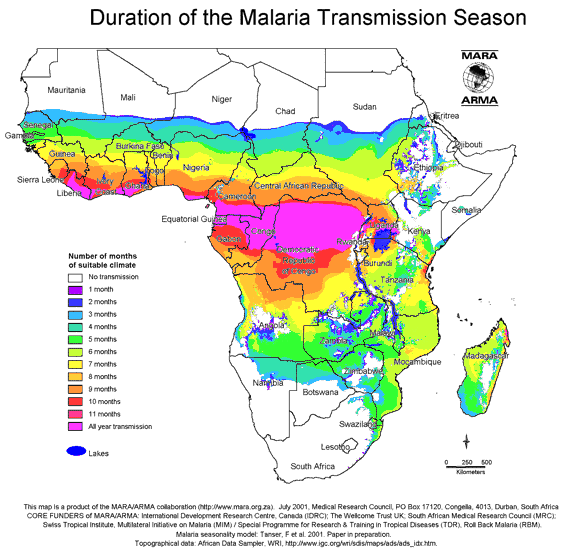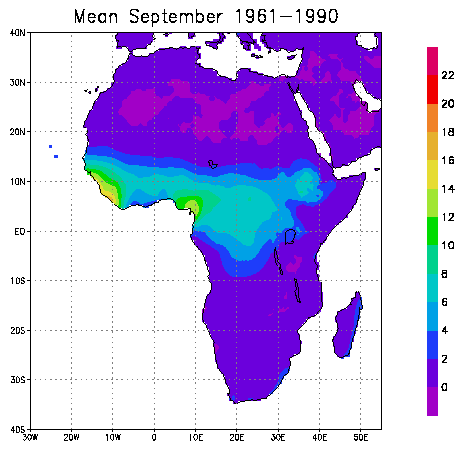
Section 3: MALARIA & MODELLING

Geography
Contents:
C:
Because of the importance of water availability and temperature to both the lifecycle of the malaria parasite and the malaria vector (mosquito) there are clear global patterns in the prevalence of malaria linked to climate (this is explained in detail on the biology pages. For a simplified version for non-biologists, click here or on the link on the left).
The map below shows that the distribution of malaria is confined to the tropics and parts of the sub tropics.
Source: WHO global atlas
We can see that the disease is found across the globe in a near continuous belt through countries including India, Indonesia, and through the tropical parts of southern and central America. Some areas, for example Florida in the USA, have the right climatic conditions for malaria, but due to public health measures (such as spraying) the disease is no longer present.
The region most affected by malaria is sub-Saharan Africa. This map below shows the varying rates of malaria in this region:

Notice the difference between the red areas where malaria is endemic (present all year round) and epidemic areas of the disease (orange). It is in these non-endemic areas where seasonal variations in the climate are important as changes in climatic conditions here govern the risk of malaria transmission.
Not all of Africa suffers from malaria and in many places there is a distinct seasonality. The seasonality in malaria is mostly governed by the seasonal distribution of rainfall.
The rainfall areas move north and south following the position of the sun with a lag of about two months. The rainfall maxima (highest rainfall) occurs in West Africa in August,just after the northern latitudes mid summer. The rains move south of the equator during the boreal winter. The map below shows this seasonal pattern of rain (the different colours show mean monthly rainfall in mm for 1961-1990. Click on the moving image to see individual maps for each month.
Source: CLIVAR VACS African Climate Atlas
The timing of the rainy season affects the months of malaria transmission. The map below shows the number of months of malaria transmission.

The map shows that in the equatorial regions, excluding the upland areas associated with the Rift Valley and the east, and along the West African coast there is all year round transmission. Here the malaria is said to be holoendemic.
This duration of months with suitable climate determines whether malaria is endemic (present all year round) or epidemic (seasonal) in a region. This is shown on the map below:

As you move away from the equator the months of transmission reduce and are related, mostly, to the length of the rainy season. The regions that receive rainfall each rainy season are areas of seasonally endemic malaria and epidemic areas are found on the fringes of the distribution as they occur irregularly i.e. only in years when rainfall is found in normally arid regions – this is the case for a number of countries in west Africa and southern Africa.
As you will have probably realised the month when the malaria season starts and ends is also controlled by the seasonal cycle of the rains.

1. Which region is most affected by malaria?
2. Why does Florida not have malaria?
3. Seasonal variations in climate affect malaria transmission in which type of area?
4. The seasonality of malaria in Africa is mainly governed by what?
5. Most cases of malaria in Africa occur in which season?
6. Which of these countries have malaria all year round?



